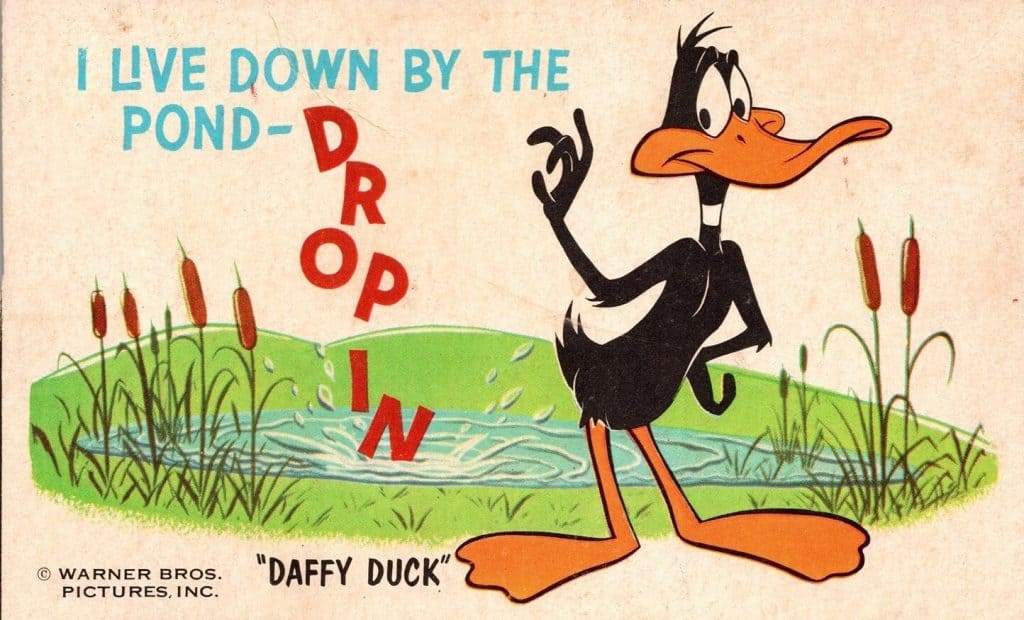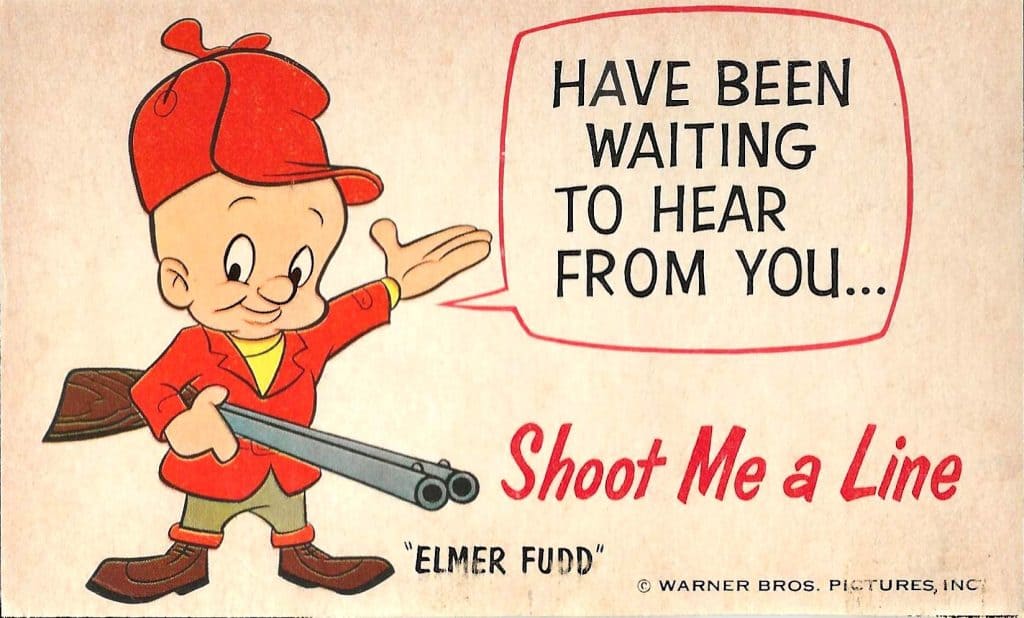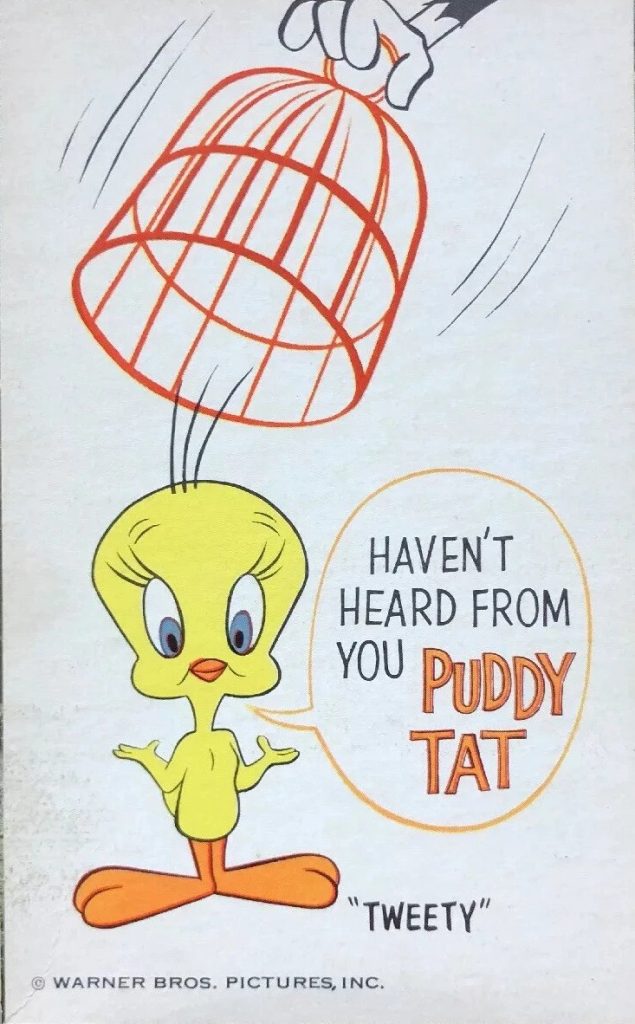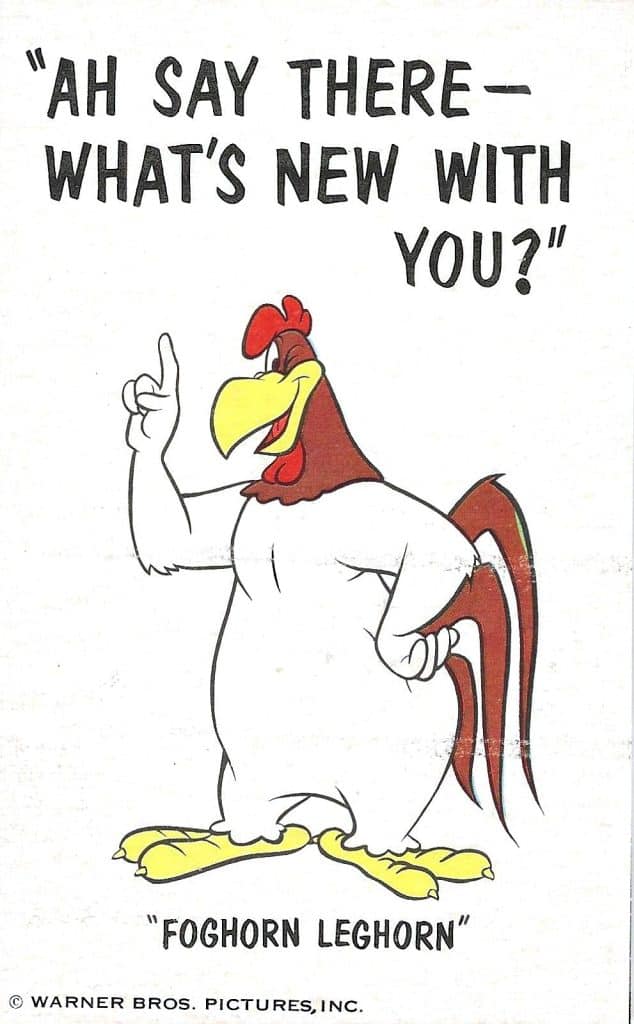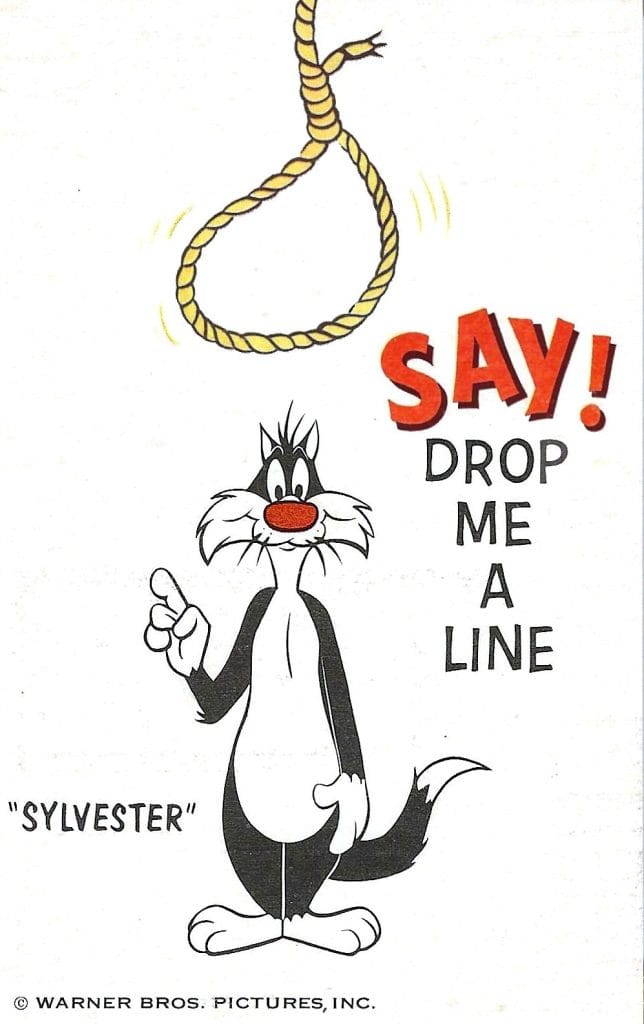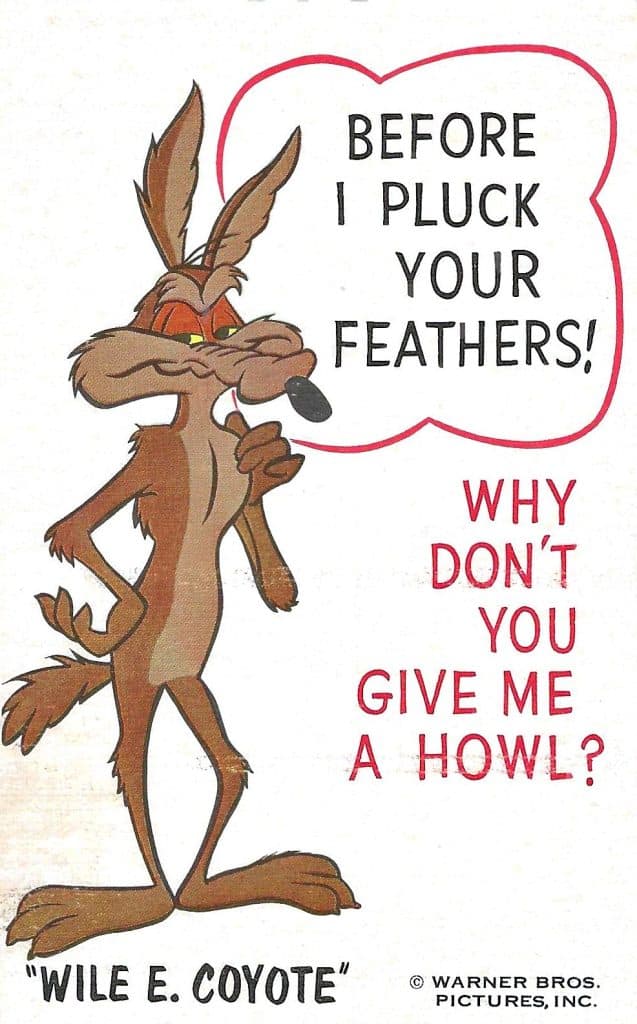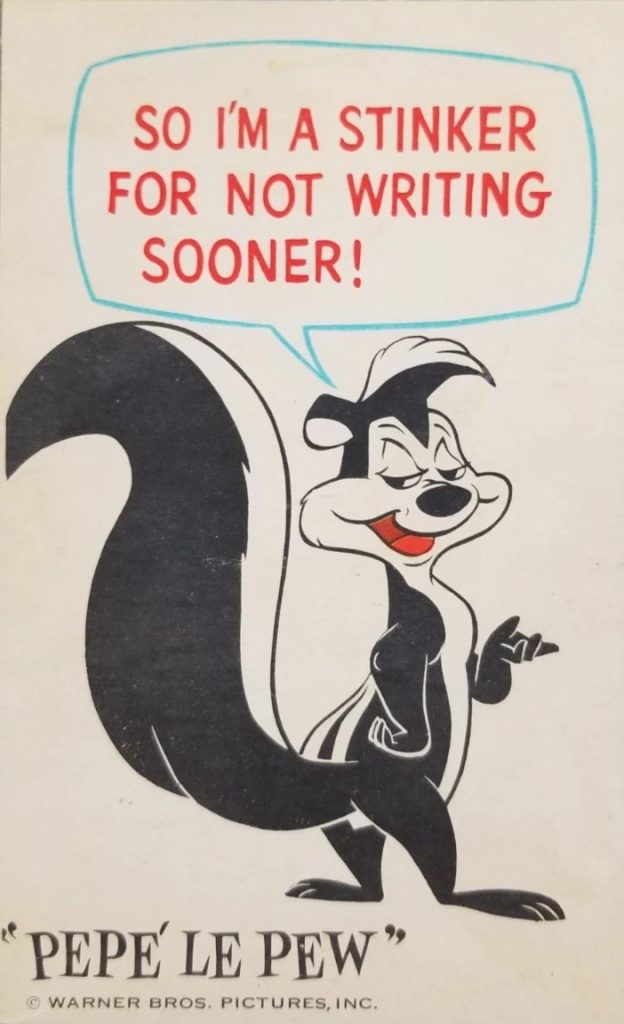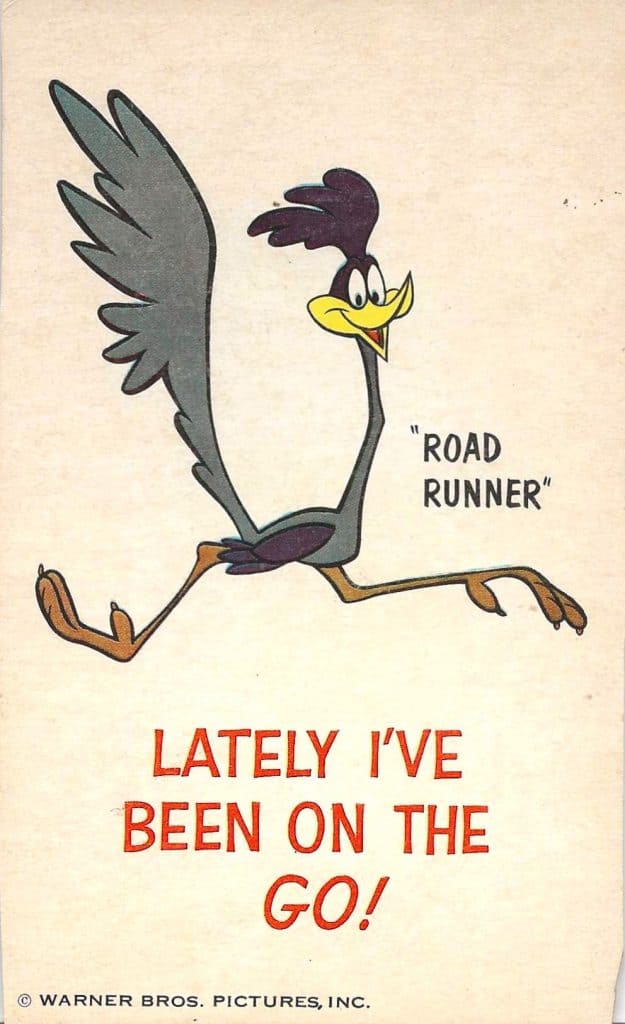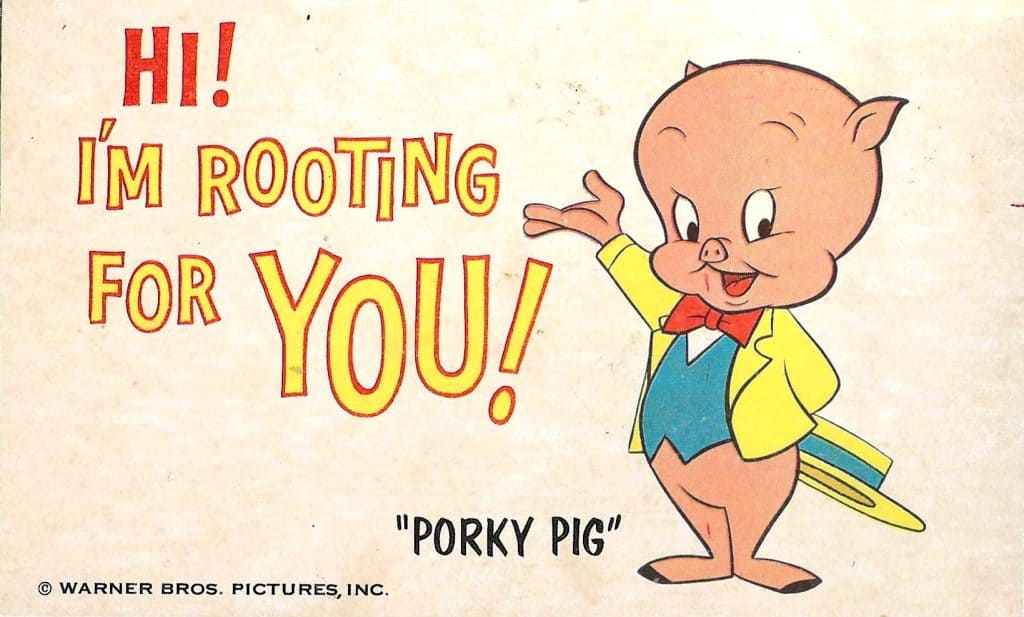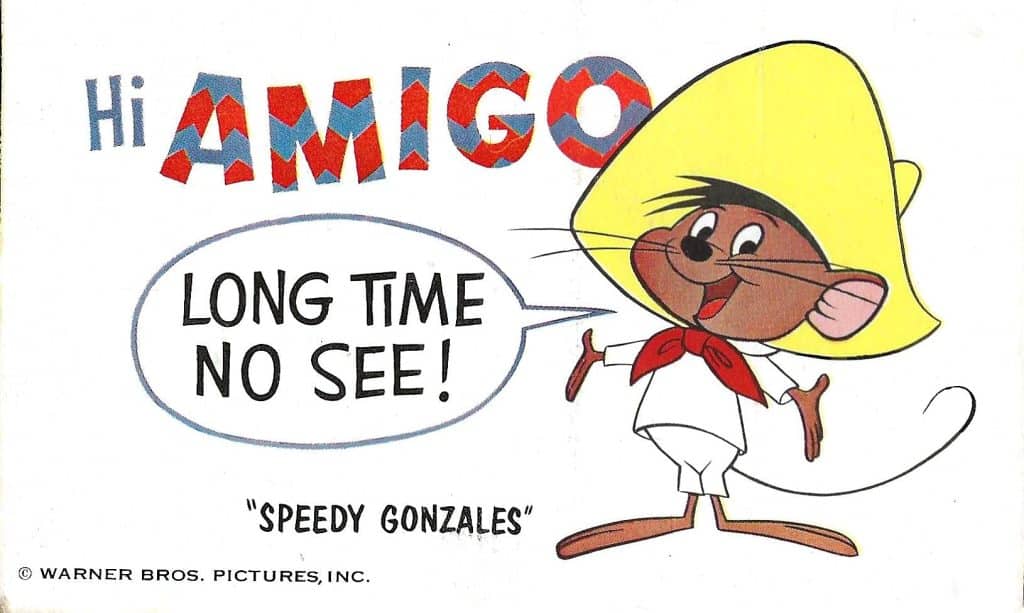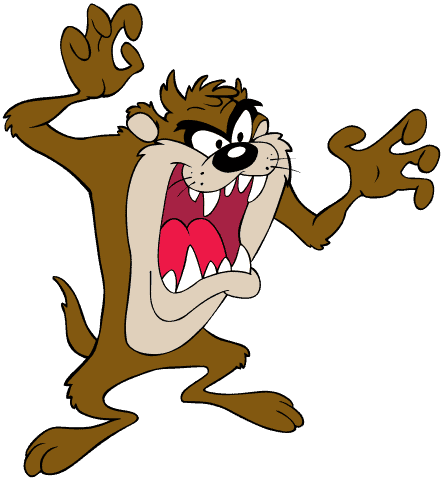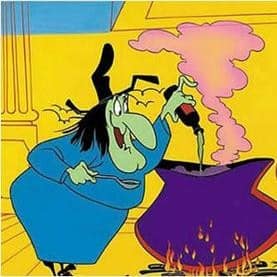https://postcardhistory.net/2025/11/the-warner-brotherscartoon-characters/
|
The Warner Brothers' cartoon department was a gold mine of characters. It created cartoons that entertained two generations. The brothers sold them in 1953, a huge mistake as today these cartoons entertain millions on television. |
|
|
|
November 27, 2025
The Warner Brothers’
Cartoon Characters
Published on

In the months and years from October 1942 until May 1947, the “Warner Bros. Present[s]” title card ran on theatre screens as a pre-feature. Those who cared about what came next were the young-at-heart between six and sixty. After seeing one Warner cartoon, Americans couldn’t get enough, but this first wave of color cartoons in the “Looney Tunes” series got very little respect from the front office at Burbank, California.
The Warner brothers cared little about their studio’s cartoon operation. Animated characters such as Bugs Bunny, Elmer Fudd, Daffy Duck, and Porky Pig, while embraced by cartoon lovers, “were always stepchildren at Warner Bros.” As biographer Bob Thomas wrote, “Jack Warner…considered cartoons no more than an extraneous service provided to exhibitors who wanted a full program for their customers.”
In 1953, during a rare meeting between the Warners and the studio’s cartoon makers, Jack confessed, “I don’t know where the hell the cartoon studio is.” And, his brother Harry added, “The only thing I know is that we make Mickey Mouse,” which was a reference to the primary character of a competing company – Walt Disney Productions.
After that meeting, Jack Warner sold all 400 cartoons Warner Bros. made before 1948 for $3,000 apiece. Mr. Thomas was quick to note in his book that “They have since earned millions, but not for the Warner Brothers.” Even now – in 2025, those cartoons entertain early morning viewers of cable television.
Jack’s tumultuous relationship with his brother Harry worsened in February 1956, when Harry learned of Jack’s decision to sell the Warner pre-1950 films to Associated Artists Productions for the modest sum of $21 million. Upon hearing of the deal, Harry’s reaction was, “This is our heritage, what we worked all our lives to create, and now it is gone.”
From 1936 until 1944, animation directors and animators with international reputations worked at the studio. During that time, these creators introduced several of the most popular cartoon characters ever. Daffy Duck came first in 1937, followed by Elmer Fudd and Bugs Bunny in 1940, and Tweety in 1942.
From a casual observer’s point-of-view the Warner cartoon division was in a constant state of turmoil. The principal animator was in continual disagreement with the head of the department, which may have resulted in an animator’s strike. And, at one point every unionized employe was banished from the studio. All this soon became known as the “Looney Tune Lockout.”
When the golden age arrived (1940s-1950s) the Warner cartoons were directed by pioneers such as Tex Avery, Friz Freleng, Bob Clampett, Chuck Jones, and Robert McKimson. Each of them pushed the boundaries of animation with innovative humor, timing, and character development.
The most popular characters were:
.
No evidence of an agreement between Warner and an unknown publisher has been found, but the most popular set of postcards showing Warner cartoon characters is copyrighted by Warner Bros. Pictures, Inc. and entitled, Bugs Bunny Fun Post Cards, circa 1960.
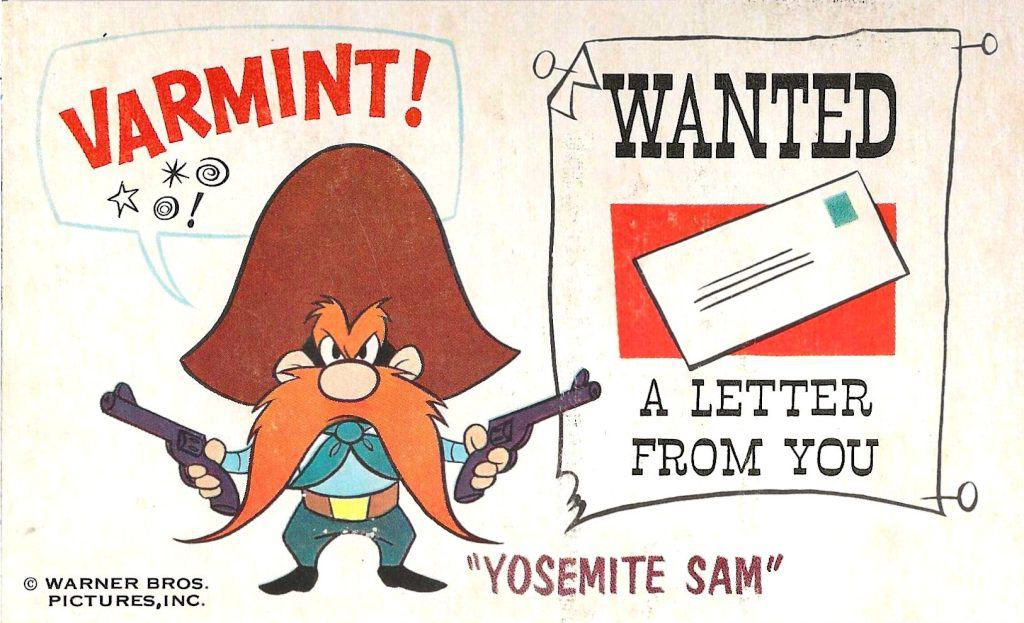
Despite the open contempt that Jack and Harry Warner had for the Warner Bros. Cartoon Division of their company, it became one of the most influential animation studios in the world. Eventually it came to be known as Termite Terrace because of the decrepit facility where dozens worked each day and continued to produce wonderful full-feature characters who entertained millions.
A list follows that is likely incomplete, but the names will surely help you to recall the humorous antics and great music you heard as a child when you watched those fabulous “Looney Tunes and Merrie Melodies.”
Animated Warner Cartoon Characters
Angus MacRory, Barnyard Dawg, Beaky Buzzard, Blacque Jacque Shellacque,
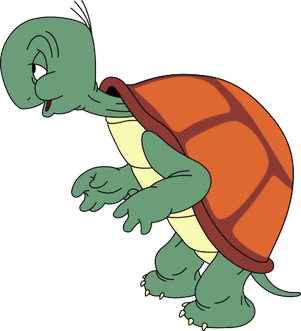
Cecil Turtle
Charlie Dog, Colonel Rimfire, Colonel Shuffle, Cool Cat, Gabby Goat, Goofy Gopher, Gossamer, Granny, Hatta Mari, Hector the Bulldog, Henery Hawk, Hugo the snowman,
Lola Bunny, Marvin the Martian, Merlin Mouse,

Michigan J. Frog,
Miss Prissy, Nasty Canasta, Penelope Pussycat.
Also, Petunia Pig, Playboy Penguin, Ralph Wolf and Sam Sheepdog, Rocky and Mugsy, Slowpoke Rodriguez, Sniffles, Spike the Bulldog and Chester the Terrier,
Tasmanian Devil, and Witch Hazel.
Sadly, by the 1960s, the studio faced financial challenges due to changing tastes and America’s enthusiasm for television. These factors hastened the end of the theatrical cartoon era. Warner ceased producing theatrical cartoons in 1963.
In the entertainment history books, the Warner cartoon division is best remembered for the characters it created. They were memorable and comedic innovations that no one has been able to replicate.

